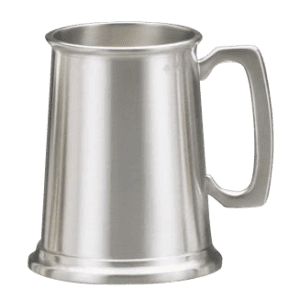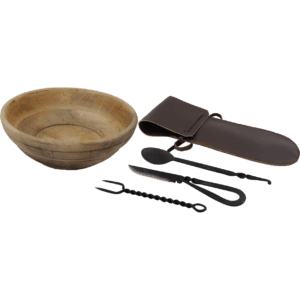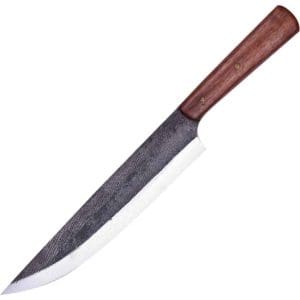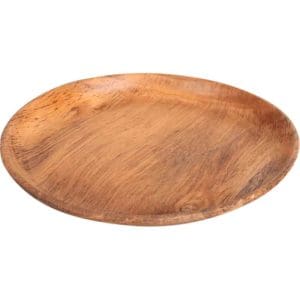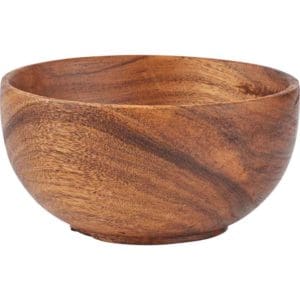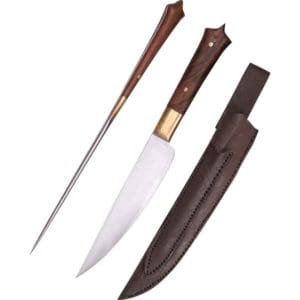Medieval Feast
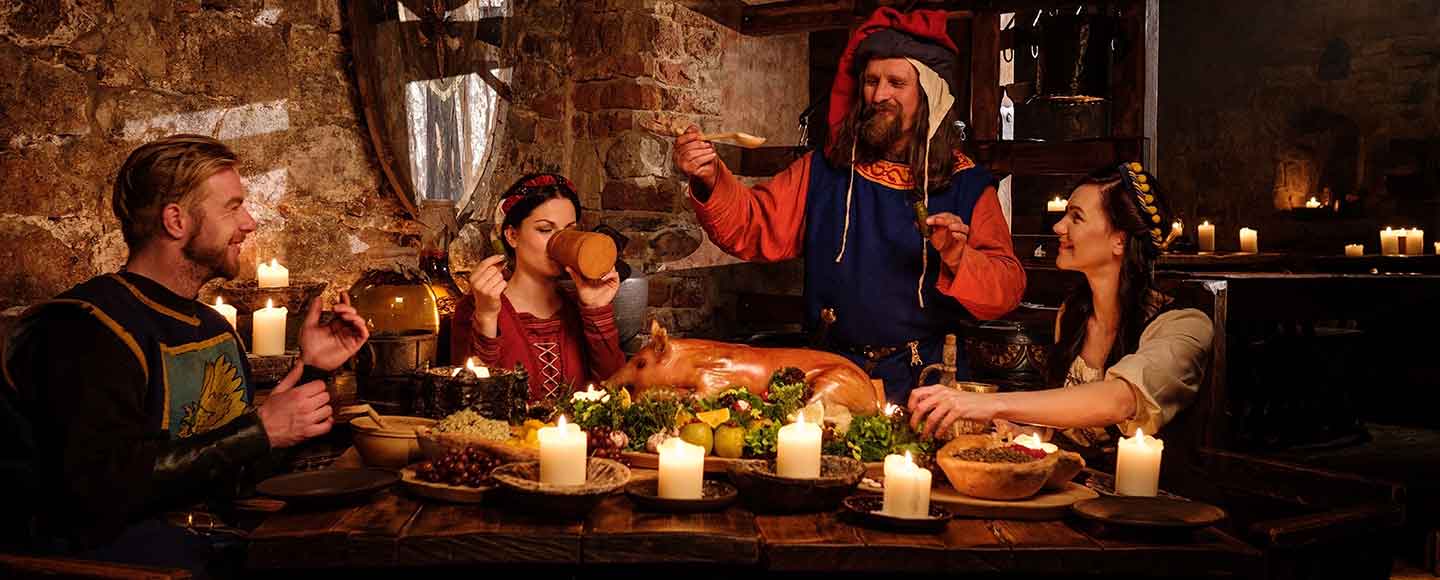
Thanksgiving did not exist in medieval times, but medieval nobles and royals were definitely no strangers to fine feasts with lots of food! Feasting was a grand social occasion often filled with an unimaginable amount of food in great variety, all for the enjoyment of a royal or well-off lord and a few hundred of his closest friends. Typical items that that you might find at Medieval Feast are Medieval tankards, goblets, chalices, plates and cutlery. Some of these items are listed below but Medieval Collectibles carries many other types of Medieval feastware that can be used in your home, camping, Medieval re-enactments, LARP events, Medieval Faires or even collecting these fine pieces.
Making the Preparations
As a feast generally meant a massive number of people in attendance, it was the job of a master chef to orchestrate everything perfectly. This involved gathering a huge amount of food and planning out and overseeing every dish, from the meat and sauce to the wines, seasonings, soups, and desserts. A feast could be planned from weeks to months in advance, and the food at a noble’s feast absolutely had to be fresh, so livestock and wild game both were gathered before the feast and kept alive right up until a few days before or the of the day of the feast. Meat was much more expensive than vegetables, fruit, or grains, and so was the sauce that accompanied it. In fact, sauce-makers (along with pastry chefs) were typically considered the most skilled and valuable members of a kitchen staff. Feasts required not just a massive amount of food, but a great variety as well, in order to please picky guests, to account for specific dietary needs, and to show off the wealth and exotic, fashionable tastes of the host. This particularly applied to dishes with diverse colors and spices. Below are some of our most popular cooking knives, mincing knives and cleavers to prepare your food.
A Noble Occasion
Social etiquette informed much of the feast’s set up. Attendees wore their best clothes and were seated in positions relative to their order of importance. A feast was a time to impress important people and show off wealth, taste, and generosity. Medieval dinners were five course meals presented on great tables set on daises in great halls, presented with theatricality and artistry. Entertainment could include musicians and jesters as well as servers dressed in costume and playing different characters as they presented the food to honored guests. Cutlery was rare for most of the middle ages, and attendees ate their food with their hands off of dry bread plates, called “trenchers”. In later times, diners would eat from bowls made of wood or pewter. Drink would be shared from one cup with many handles. Oddly enough, most women would not attend the eating part of a feast, not even the wife of the host. In following with strict social codes that frowned upon noble women appearing messy or unrefined, women would often eat in private and rejoin the table after the eating was over. Below is our most popular bowls, plates and cutlery to set your table and enjoy your feast.
Let’s Eat!
Even what and how much a person was offered to eat could depend on their particular social standing. If it was a king’s feast, the king’s plate would be piled high with everything available so that his wealth could be seen by all and, if he so chose, he could appear extra generous by offering portions of his personal bounty to esteemed guests. Nobles were presented with certain dishes or a certain number of dishes in relation to their station.
As far as the types of food served, meat was again of utmost important. It was fashionable to dine on beautiful birds like swans, peacocks, doves, and heron, served decorated with their feathers and with their feet and beaks gilt. Chicken, a more familiar bird to the modern day, was also offered, as well as other livestock meat from sheep, oxen, and pigs. Peasants were forbidden to hunt wild game like rabbit, deer, and wild boar, so these “delicacies” definitely had a place at the tables of royals and nobles. Soups, stews, and pies were popular dishes made with these ingredients and flavored with saffron, cloves, cinnamon, vinegar, and honey. For dessert, instead of the pumpkin pie we think of as today’s holiday feasting dessert, medieval nobles dined on sweet cream, slices of cheese, and plums stewed in rose water.

